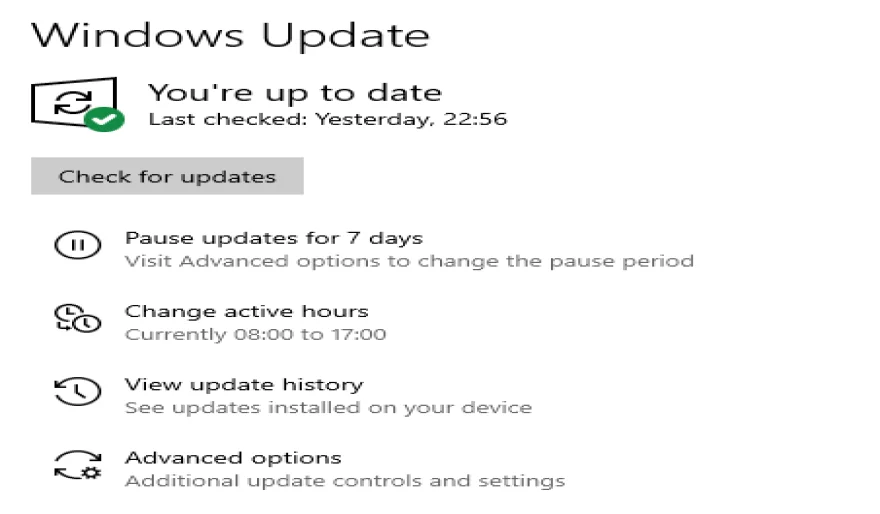How to check the update history on my phone for past installations?
10 min read How to check the update history on my phone for past installations? - written by Amine Rukhi, Content Creator March 02, 2024 10:00
How to Check Update History on Phone
1. Introduction
It should be noted that the process outlined in this essay has been prepared for usage on a Samsung Galaxy S3 device. Therefore, the same steps may not apply to other devices. This process is also based on the assumption that the device in question has already been updated at some point in time, and therefore the update history will contain some information. Finally, the process also requires that the user have a computer or laptop (it doesn't matter if it runs Windows or Mac) and a USB cord to connect the device to the computer.
This essay provides a brief overview of the process used to check update history on a mobile phone. Unfortunately, the update history is not normally accessed through the device. Therefore, the steps in this essay report an alternative way to access it. Checking the update history is especially useful when some updates have detrimental effects on the device, as it helps to specifically identify which update is causing the problem and has the option to uninstall that specific update.
2. Accessing Update History
1. User can view the update history of an app by going to My Apps and games. 2. For details of a specific update, the user can click on the app, then in the bottom left corner, click "Read More". 3. If the update is recent and the user is currently on the app info screen, they can scroll down to "What's New" and click "See More". This action will take them directly to the page where they can view those details. 4. Finally, the user can pull up the search bar from the My Apps and Games screen and search "Open App Info". Clicking this link will show a list of all installed apps, and by clicking on any of those apps, the user can also see the update history at the bottom of the screen and uninstall or revert to a previous version from there.
By enabling users to access their update histories for different libraries, Play Services provides a lot of flexibility in terms of checking update history for apps. By following the steps below, users can view their past updates for apps.
3. Viewing Past Installations
- Go to the Market page once more and pull up the slide-out drawer, this time choosing "Downloads". (NOTE: For Android 2.2 (Froyo), the path is generally Home > Menu > Downloads). This will bring a listing of all of your downloaded apps. Flip through this list and search for the app at issue. If it's not found, it was not installed. If it is located, it was in some way installed. This could provide useful information as to when and how your app mysteriously disappeared. - In the recent updates of the Play Store, you can now check for recent updates. Go to the My Apps tab and there is now a tab for "all" (showing all apps installed), "updated" (showing all apps that were recently updated), and "installed" (showing all apps, sorted by when they were installed). This can be useful for seeing if you updated an app that normally sits unused and it had undesired side effects.
4. Understanding Update Details
• Security update: It is an important step to avoid any unwanted viruses/threads to the particular software. It is more focused on the quality of the software to make it run with a virus-free system. These changes will rarely be notified to the user, but it is an automatic update that is very important to make sure that the system doesn't get any unwanted things that can change the system's functionality.
• System update: This update is more to fix the problems with the unsatisfactory results from the previous version. The developer will find all the bugs, mistakes done while doing the previous software, and will make some changes to the particular software. It can include some variables ranging from the compatible level for the software. It is all about increasing the system quality. Let's say with 32-bit processing, it will change to 64-bit processing. This is important to make a very huge change in the quality because it will avoid the customer from regretting after buying a product. This kind of update needs to be informed to the customer because there will be some customers with the previous software that are willing to try this new update. Generally, they just want to see what's changing in the new update.
• Version update: The update consists of all the new/changed features from the previous version. It is based on the customer's perspective on the preceding version. In other words, whether they are satisfied/upset about it. In conclusion, these updates tend to meet the customers' satisfaction in order to attract the customer to buy the same product/application or to prevent the customer from buying the opponent's product. An example of a product is an Android phone. The version update can change from Froyo (2.2-2.2.3) to Gingerbread (2.3-2.3.3) and so on. This is a simple way to attract the consumer to keep buying the Android phone and not to change to another type of phone.
, such as version updates, system updates, and security updates.
5. Conclusion
In conclusion, it is important to periodically check the update history on your phone. Through the update history, you get an idea of what changes went into your phone, so it becomes useful especially if you notice problems with your phone and want to know if it was due to an update. The information on the update can guide you on what to do. If the update is the cause of the problem, then you can help yourself by contacting the phone helpdesk with detailed information as they might be able to give you a solution till the next update. If the update positively impacts your phone, it should be a confirmation for you to keep updating the phone regularly for improvement. You might notice that some recent updates with positive impact were due to updates you missed out. Another reason checking the update history is useful is because some updates may have a negative impact on your phone, hence delaying the notification of an update till the problem is fixed. You will then know what the update was about to do to resolve the problem. Finally, this knowledge is good for trivia, and if you are an IT student, it might give you an idea on what to learn when developing an application.
User Comments (0)
Popular Apps










Editor's Choice









